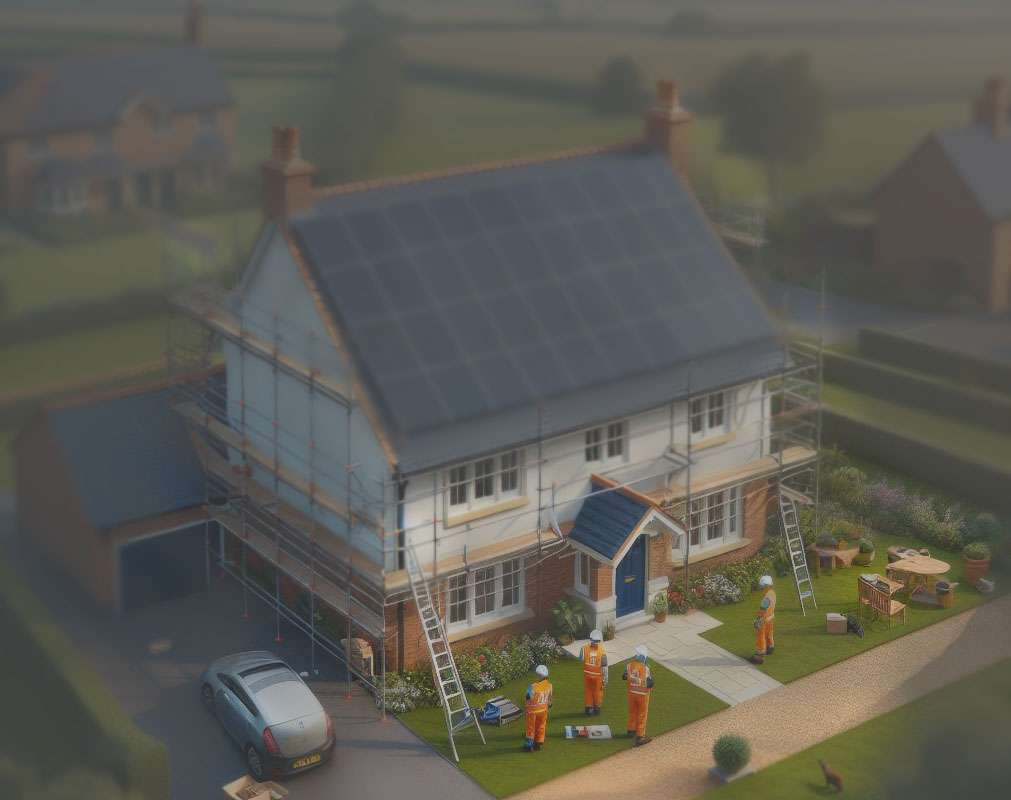Roof mounted solar is highly popular due to the array being out of the way and the lack of space to ground mouth solar panels. Even with ground mounting you can still lose a lot of solar power. here is why.
Solar panels work by converting sun light into electricity, the stronger the sun the higher the current, and we all should know this, but the angle that the sun hits the panel is important too. If you have not read our other article on Angle and tilt of solar panels, this should give you some insight.
Solar panels have a “optimal” angle where the sun hits the panels, this is around 30 degrees either way and this can be seen as the power curve over the day. By turning the panels east and west the curve moves earlier or later in the day. However this is the angle and the tilt does make a difference too.

Over the past few years we have been running dual arrays, the summer and the winter solar arrays. We gather live data from them both and can see the difference in performance which is no shock to us but will really make a difference to your solar production.
Most roofs are at a angle of 35-45 degrees and would be South facing, we have dealt with the myths many times on this website. While many businesses will repeat the mantra of the south facing it is NOT often ideal and because your roof may not be south facing, east and west facing can also be practical.

Understanding Solar Panel Tilt Angle and Roof Pitch
The test results you’ve outlined clearly demonstrate the critical role of solar panel tilt angle in maximizing energy capture throughout the day. However, there’s another important factor to consider: roof pitch.
Impact of Roof Pitch on Seasonal Production:
The angle of your roof significantly impacts how much your solar production is affected by seasonal changes in sun elevation. In many cases, prioritizing usable energy during peak demand periods might be more important than maximizing overall production. For example, even though shorter winter days result in lower overall yield, energy consumption often increases due to heating needs. Therefore, a slight tilt bias towards winter sun angles can be a sensible strategy.
Your Test Results and Considerations:
Our test, while using a somewhat extreme comparison (almost upright vs. nearly flat panels), highlights the dramatic impact of tilt angle (a 50% difference in production!). Currently, our test system is tilted at 45 degrees, facing south, during the summer (June). It’s underperforming compared to a summer array tilted at 10 degrees off flat with a slight east bias, showing a 30% difference.
Key Points:
- Balance winter and summer production: There’s a balance to be struck between maximising winter and summer production. Consider using a solar panel tilt angle calculator that factors in your location and desired energy production balance throughout the year.
- Prioritise usable energy: In some cases, focusing on capturing sunlight during peak usage periods (often winter) might be more beneficial than maximising overall annual production (south).
- Seasonal adjustments (if feasible): If your system allows for adjustments, research the optimal tilt angles for your region in different seasons.
- Monitor and fine-tune: Continuously monitor your system’s performance and adjust the tilt angle (if possible) to optimize for your specific needs and usage patterns ( tracking).
- Account for clouds: indirect sun light is effected by refraction at ground level and flatter panels normally perform better.
By understanding the interplay between sun elevation, panel tilt angle, and roof pitch, you can ensure your solar panel system generates the most usable energy for your specific needs.
Solar installations on the roof will lose you power in both the summer and the winter, while summer losses are mitigated by the longer sun hours, it is often the concern that winter power production is reduced and needs to be much better for most solar energy systems.
It is not possible to alter your homes roof, and there are no systems manufactured to address the tilt, this is due to wind and winter forces on the panels and it being a lot more work, you could think about a solar tracker, this will boost performance by 40% daily.
The other option is a ground mount or using dual arrays focusing on both summer and winter production.
A typical roof installation will lose 35% production during both the high and low points of the year.

No responses yet